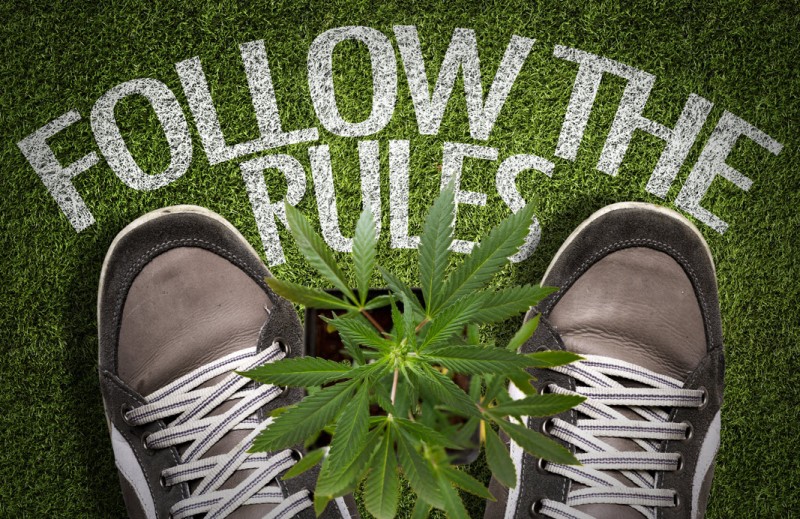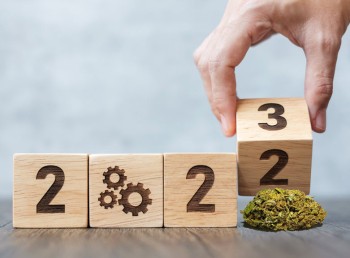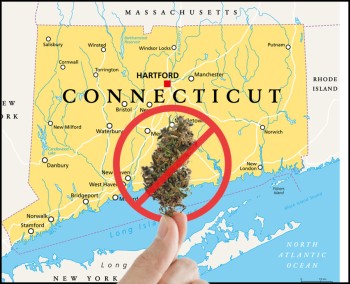
Would Cannabis be better without any regulation?
The cannabis landscape is rapidly evolving, with discussions about rescheduling marijuana to Schedule III in the United States gaining traction. However, a growing chorus of voices argues that this step doesn't go far enough. Some advocate for the complete removal of cannabis from the Controlled Substances Act (CSA), effectively ending federal prohibition.
Proponents of deregulation, including anarchists and libertarians, contend that a free market approach to cannabis would yield superior outcomes compared to the current regulatory framework. They argue that removing government oversight would foster innovation, reduce costs, and eliminate the black market.
But would a completely unregulated cannabis market truly be the panacea its supporters claim? As we stand at this crossroads of drug policy, it's crucial to examine both extremes: strict regulation versus complete deregulation.
In this article, we'll dive deep into the potential consequences of a "non-regulated marketplace" for cannabis. We'll explore the arguments on both sides, weighing the purported benefits against the potential risks. By examining these contrasting approaches, we aim to shed light on whether a hands-off policy could indeed create a better system for consumers, businesses, and society as a whole.
Let's embark on this exploration of cannabis regulation – or lack thereof – and see where the evidence leads us.
The Pros and Cons of Regulation
As with any complex issue, cannabis regulation comes with both advantages and drawbacks. Let's examine both sides of the coin.
Pros of Regulation:
-
Quality Control: Regulations ensure that cannabis products are tested for contaminants like pesticides, heavy metals, and mold, protecting consumer health.
-
Age Restrictions: Legal frameworks help prevent underage use by setting and enforcing age limits for purchase and consumption.
-
Accurate Labeling: Regulations mandate truthful packaging, ensuring consumers know the potency and contents of their products.
-
Standardization: Uniform testing and labeling requirements allow consumers to make informed choices across different products and brands.
Cons of Regulation:
-
Increased Costs: Compliance with regulations drives up production costs, which are often passed on to consumers, making legal cannabis more expensive.
-
Arbitrary Rules: Some regulations may be based on political considerations rather than scientific evidence, potentially hampering product development and innovation.
-
Limited Market Choices: Strict regulations can restrict the variety of products available, reducing options for consumers and stifling creativity in product development.
-
Bureaucratic Hurdles: Complex licensing and compliance requirements can be time-consuming and expensive, favoring large corporations over small businesses.
While regulations aim to protect consumers and ensure product safety, they also create significant barriers to entry in the cannabis industry. This is particularly true for individuals with limited financial resources or those from communities disproportionately affected by the War on Drugs.
The high costs associated with licensing, compliance, and ongoing regulatory requirements effectively exclude many potential entrepreneurs who might excel at cultivating or selling cannabis but lack the capital to navigate the regulatory landscape. This financial barrier is especially problematic for those from low-income backgrounds or communities that have historically been targeted by cannabis prohibition.
As a result, the regulated cannabis market often becomes dominated by well-funded corporations and investors, rather than reflecting the diverse range of skills and expertise within the cannabis community. This concentration of power in the hands of a few large players can lead to a more limited marketplace, potentially reducing innovation, variety, and affordability for consumers.
Moreover, the exclusion of smaller, more diverse operators may perpetuate existing inequalities and prevent the cannabis industry from fully benefiting from the wealth of knowledge and experience that exists within communities that have long-standing relationships with the plant.
In essence, while regulation serves important purposes, it also risks creating a less diverse, less competitive, and potentially less innovative cannabis market. This trade-off between safety and accessibility is at the heart of the debate over cannabis regulation.
The Pros and Cons of No Regulation
Just as with regulation, a completely unregulated cannabis market would come with its own set of advantages and disadvantages. Let's explore both sides of this scenario.
Pros of No Regulation:
-
Lower Prices: Without the costs of compliance and licensing, cannabis products could become significantly more affordable for consumers.
-
Market Diversity: A barrier-free market could allow for a wider range of producers and products, potentially leading to more innovation and variety.
-
Easier Market Entry: Anyone with the skill and desire to grow or sell cannabis could do so, opening up opportunities for small-scale cultivators and entrepreneurs.
-
Reduced Government Spending: Eliminating the need for regulatory bodies and enforcement would save taxpayer money.
-
Potential for Rapid Innovation: Without regulatory hurdles, new products and cultivation techniques could be brought to market more quickly.
Cons of No Regulation:
-
Quality Concerns: Without mandatory testing, consumers might be exposed to contaminated products or mislabeled potency levels.
-
Age Accessibility: It could become easier for minors to access cannabis without age verification requirements.
-
Lack of Standardization: Inconsistent product quality and labeling could make it difficult for consumers to make informed choices.
-
Potential for Exploitation: Without worker protections and safety standards, employees in the cannabis industry could face hazardous working conditions.
-
Environmental Issues: Unregulated cultivation could lead to environmental damage through excessive water use, pollution, or habitat destruction.
An unregulated cannabis market would significantly lower the barriers to entry, allowing a more diverse group of individuals to participate in the industry. This could lead to a flourishing of small businesses, craft cultivators, and niche product developers who might otherwise be priced out of a regulated market.
Moreover, the absence of regulatory constraints could foster a more dynamic and responsive market. Producers would be free to experiment with new strains, products, and delivery methods without navigating lengthy approval processes. This could potentially accelerate innovation in medical applications of cannabis and lead to a broader range of products tailored to individual consumer preferences.
However, this freedom comes with significant risks. Without oversight, there's no guarantee of product safety or accuracy in labeling. Consumers would need to be more vigilant and rely on reputation and word-of-mouth to make informed choices. The lack of age restrictions could also lead to increased underage use, raising public health concerns.
Furthermore, an entirely unregulated market might eventually lead to consolidation as larger, more efficient producers outcompete smaller ones, potentially recreating some of the market limitations seen in regulated environments, but without the safety nets.
Ultimately, a completely unregulated cannabis market offers the promise of greater accessibility, innovation, and economic opportunity, but at the potential cost of consumer safety and public health protections. This trade-off between freedom and security lies at the heart of the debate over cannabis regulation.
What is the best system?
While the debate often centers on full regulation versus complete deregulation, there may be a middle ground that combines the best aspects of both approaches. I've previously proposed a dual or hybrid system that could potentially offer a balanced solution.
In this model, we would distinguish between two cannabis markets:
-
Commercial Cannabis: Sold in major retailers like Walmart or 7-Eleven, this market would be subject to a degree of regulation to ensure safety and consistency for mass-market products.
-
Artisanal Cannabis: Grown and sold by individuals, small businesses, or at farmers' markets, this market would operate with minimal to no regulation.
The rationale behind this approach is simple: cannabis is, at its core, just a plant. The current classification of cannabis as a Schedule I substance, alongside drugs like heroin, is increasingly viewed as misguided and outdated. A more nuanced approach to regulation could better reflect the reality of cannabis use and cultivation.
Under this system, individuals or small collectives could grow and sell cannabis as long as their profits remain under a certain threshold - say, $1 million per year. They would be free to sell at farmers' markets, to friends and family, or through small-scale clubs. These operations would be largely unregulated by the state, allowing for innovation, diversity, and lower barriers to entry.
On the other hand, large-scale commercial operations - let's call it "commercial weed" - would be subject to regulation. This is based on the recognition that large corporations, driven by profit motives, may be more likely to cut corners in ways that could impact product safety or quality.
This dual system could offer the best of both worlds. Artisanal growers would have the freedom to experiment and directly serve consumers, while the commercial sector would provide standardized products with consistent quality assurance.
In cases where an individual grower wishes to sell to a dispensary, the dispensary could request independent testing as a condition of purchase. However, this would be a private business decision rather than a government mandate.
Fundamentally, this approach recognizes cannabis for what it is - a plant that humans have cultivated and used for thousands of years. We should have the right to grow, gift, and sell it within reason. At the same time, it acknowledges the need for some oversight of large-scale commercial operations to prevent potential abuses.
This balanced approach could foster a diverse and innovative cannabis market while still providing safeguards against the potential excesses of unrestrained corporate cultivation.
But what do you think? Where do you stand on this issue? Should cannabis be fully regulated, completely unregulated, or somewhere in between? The debate continues, and your voice matters in shaping the future of cannabis policy.
HOW TO REGULATE MARIJUANA, READ ON...
WHY CANNABIS CAN'T BE REGULATED LIKE A BIG PHARMA DRUG!






